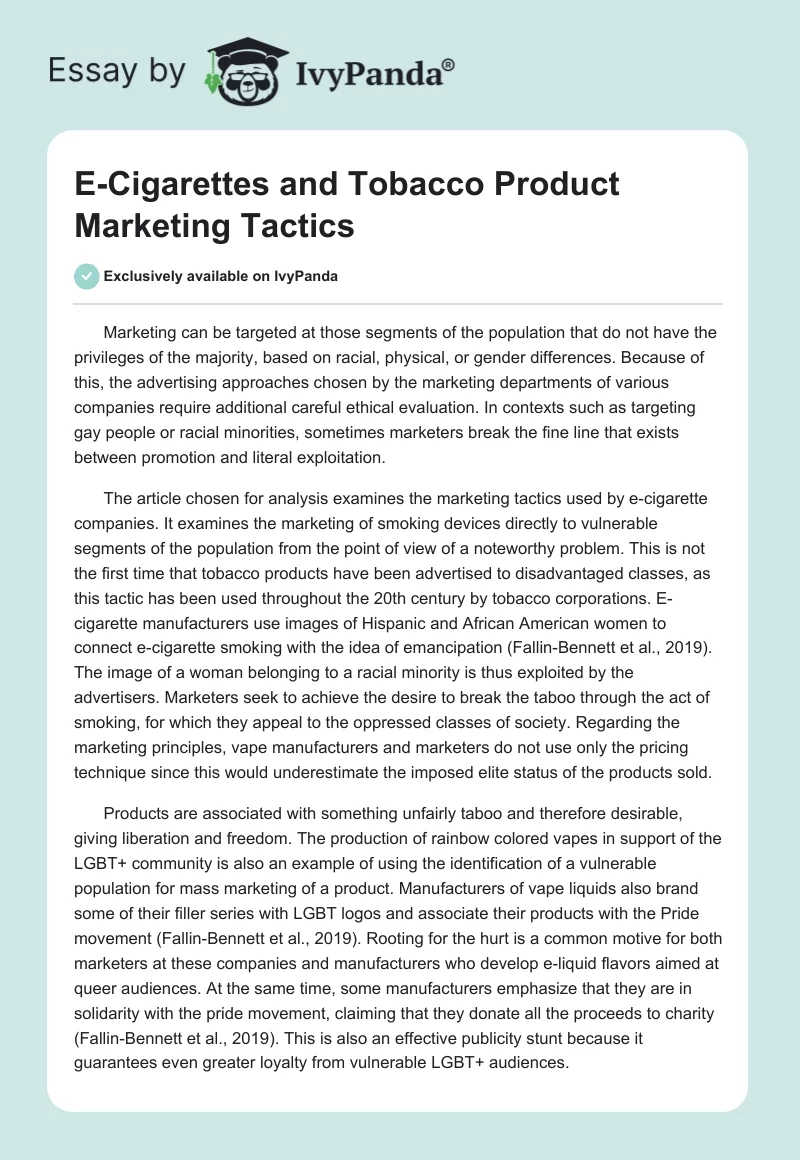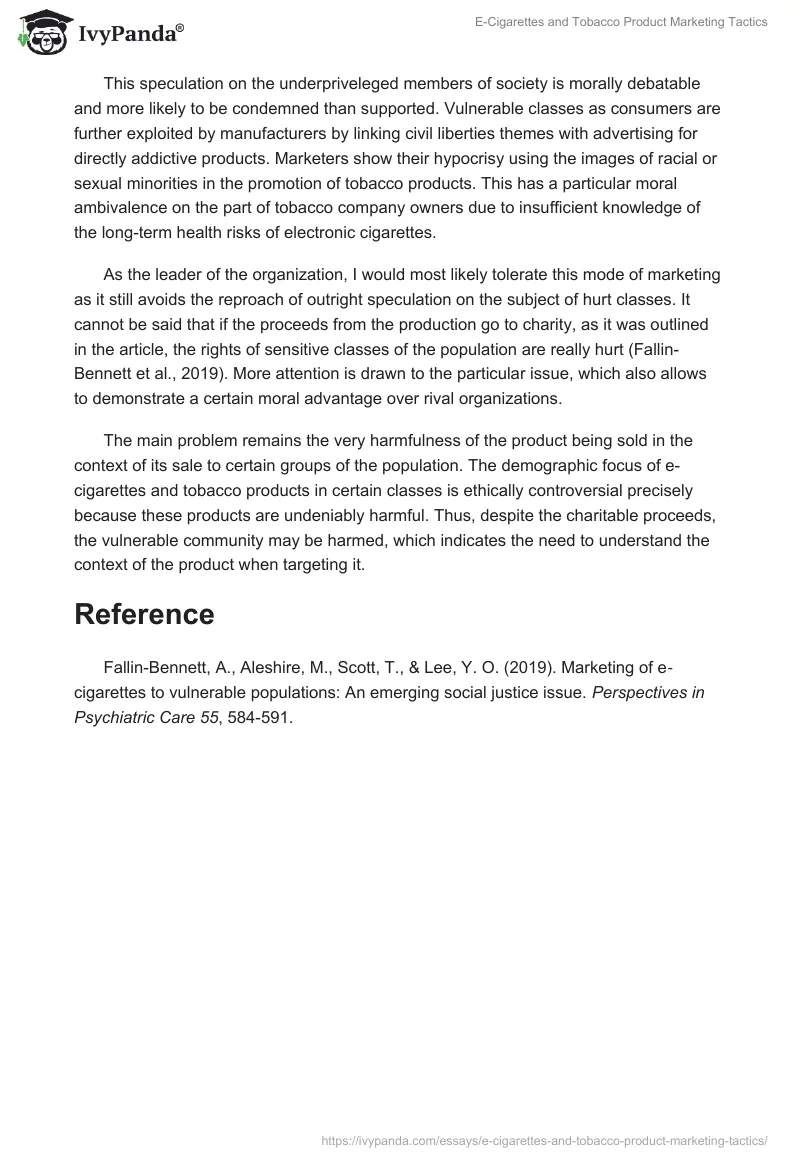Marketing can be targeted at those segments of the population that do not have the privileges of the majority, based on racial, physical, or gender differences. Because of this, the advertising approaches chosen by the marketing departments of various companies require additional careful ethical evaluation. In contexts such as targeting gay people or racial minorities, sometimes marketers break the fine line that exists between promotion and literal exploitation.
The article chosen for analysis examines the marketing tactics used by e-cigarette companies. It examines the marketing of smoking devices directly to vulnerable segments of the population from the point of view of a noteworthy problem. This is not the first time that tobacco products have been advertised to disadvantaged classes, as this tactic has been used throughout the 20th century by tobacco corporations. E-cigarette manufacturers use images of Hispanic and African American women to connect e-cigarette smoking with the idea of emancipation (Fallin-Bennett et al., 2019). The image of a woman belonging to a racial minority is thus exploited by the advertisers. Marketers seek to achieve the desire to break the taboo through the act of smoking, for which they appeal to the oppressed classes of society. Regarding the marketing principles, vape manufacturers and marketers do not use only the pricing technique since this would underestimate the imposed elite status of the products sold.
Products are associated with something unfairly taboo and therefore desirable, giving liberation and freedom. The production of rainbow colored vapes in support of the LGBT+ community is also an example of using the identification of a vulnerable population for mass marketing of a product. Manufacturers of vape liquids also brand some of their filler series with LGBT logos and associate their products with the Pride movement (Fallin-Bennett et al., 2019). Rooting for the hurt is a common motive for both marketers at these companies and manufacturers who develop e-liquid flavors aimed at queer audiences. At the same time, some manufacturers emphasize that they are in solidarity with the pride movement, claiming that they donate all the proceeds to charity (Fallin-Bennett et al., 2019). This is also an effective publicity stunt because it guarantees even greater loyalty from vulnerable LGBT+ audiences.
This speculation on the underpriveleged members of society is morally debatable and more likely to be condemned than supported. Vulnerable classes as consumers are further exploited by manufacturers by linking civil liberties themes with advertising for directly addictive products. Marketers show their hypocrisy using the images of racial or sexual minorities in the promotion of tobacco products. This has a particular moral ambivalence on the part of tobacco company owners due to insufficient knowledge of the long-term health risks of electronic cigarettes.
As the leader of the organization, I would most likely tolerate this mode of marketing as it still avoids the reproach of outright speculation on the subject of hurt classes. It cannot be said that if the proceeds from the production go to charity, as it was outlined in the article, the rights of sensitive classes of the population are really hurt (Fallin-Bennett et al., 2019). More attention is drawn to the particular issue, which also allows to demonstrate a certain moral advantage over rival organizations.
The main problem remains the very harmfulness of the product being sold in the context of its sale to certain groups of the population. The demographic focus of e-cigarettes and tobacco products in certain classes is ethically controversial precisely because these products are undeniably harmful. Thus, despite the charitable proceeds, the vulnerable community may be harmed, which indicates the need to understand the context of the product when targeting it.
Reference
Fallin-Bennett, A., Aleshire, M., Scott, T., & Lee, Y. O. (2019). Marketing of e‐cigarettes to vulnerable populations: An emerging social justice issue. Perspectives in Psychiatric Care 55, 584-591.


